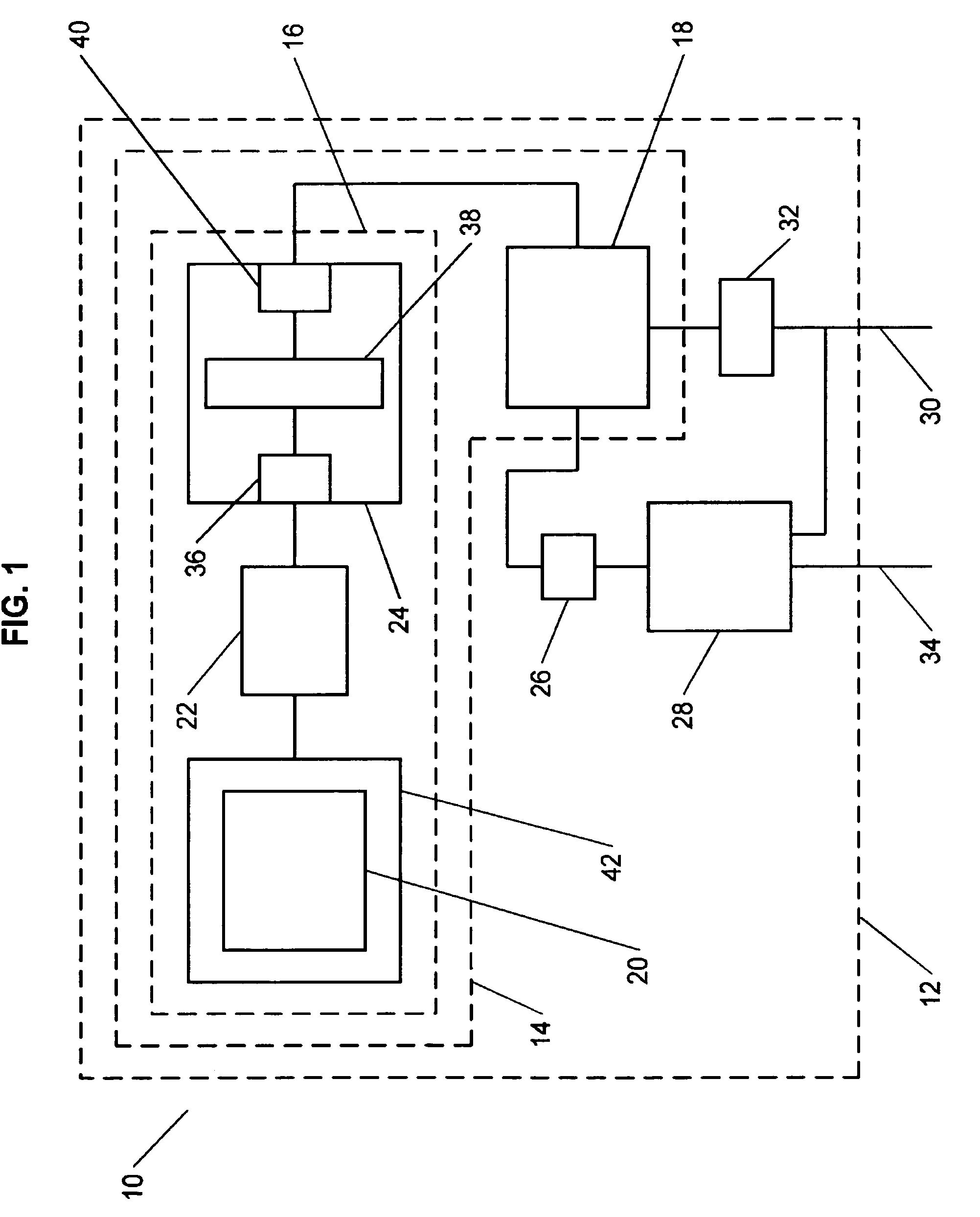Electrical generator having an oscillator containing a freely moving internal element to improve generator effectiveness
a generator and oscillator technology, applied in the direction of electric generator control, vessel auxillary drive, auxiliary drive, etc., can solve the problems of increasing the cost of operation of such devices, reducing the operational time and operation cost, and reducing the threshold for motion. , the effect of improving acceleration and performance capabilities
- Summary
- Abstract
- Description
- Claims
- Application Information
AI Technical Summary
Benefits of technology
Problems solved by technology
Method used
Image
Examples
first embodiment
[0080]Referring now to FIGS. 4A and 4B, the oscillating weight 20 is shown. In FIG. 4A the oscillating weight 20 is shown in a stationary position, along an axis 100, when the oscillating weight 20 has not been subjected to a mechanical disturbance, while in FIG. 4B, the oscillating weight 20 is shown in an exemplary angularly displaced position when the oscillating weight has been subjected to a mechanical disturbance, along an axis 118 that is at an angle A with respect to the axis 100.
[0081]The oscillating weight 20 includes a weight body 102, a pivot coupling 106 for connection to the pivot element 22 (of FIG. 1), and an elongated connector 104 connected between the body 102 at one end, and the pivot coupling 106 at the other end. An internal cavity 108, positioned within the body 102, includes a first region 110, and a second region 114, corresponding to the first and second directions in which the weight 20 is capable of oscillating, and a central region 112, between the first...
second embodiment
[0084]Referring now to FIG. 5, the oscillating weight 20 is shown as an oscillating weight 150. The oscillating weight 150 includes a weight body 152, a pivot coupling 156 for connection to the pivot element 22 (of FIG. 1), and an elongated connector 154 connected between the body 152 at one end, and the pivot coupling 106 at the other end. An internal cavity 158, positioned within the body 152, includes a first region 160, and a second region 164, corresponding to the first and second directions in which the weight 150 is capable of oscillating, and a central region 162, between the first and second regions 160, 164, that is generally aligned with the longitudinal axis of the elongated connector 154. The oscillating weight 150, also includes an acceleration element 166, for example, one or more sliding elements composed of a dense substance (e.g. metal, glass, crystal, ceramic, or stone) or of a combination of two or more dense substances). The acceleration element 166 is preferabl...
third embodiment
[0085]Referring now to FIG. 6, the oscillating weight 20 is shown as an oscillating weight 200. The oscillating weight 200 includes a weight body 202, a pivot coupling 206 for connection to the pivot element 22 (of FIG. 1), and an elongated connector 204 connected between the body 202 at one end, and the pivot coupling 206 at the other end. An internal cavity 208, positioned within the body 202, includes a first region 210, and a second region 214, corresponding to the first and second directions in which (he weight 200 is capable of oscillating, and a central region 212, between the first and second regions 210, 214, that is generally aligned with the longitudinal axis of the elongated connector 204. The oscillating weight 200, also includes an acceleration element 216, for example, one or more rolling elements composed of a dense substance (e.g. metal, glass, crystal, ceramic, or stone) or of a combination of two or more dense substances). The rolling elements may be disks, sphere...
PUM
 Login to View More
Login to View More Abstract
Description
Claims
Application Information
 Login to View More
Login to View More - R&D
- Intellectual Property
- Life Sciences
- Materials
- Tech Scout
- Unparalleled Data Quality
- Higher Quality Content
- 60% Fewer Hallucinations
Browse by: Latest US Patents, China's latest patents, Technical Efficacy Thesaurus, Application Domain, Technology Topic, Popular Technical Reports.
© 2025 PatSnap. All rights reserved.Legal|Privacy policy|Modern Slavery Act Transparency Statement|Sitemap|About US| Contact US: help@patsnap.com



